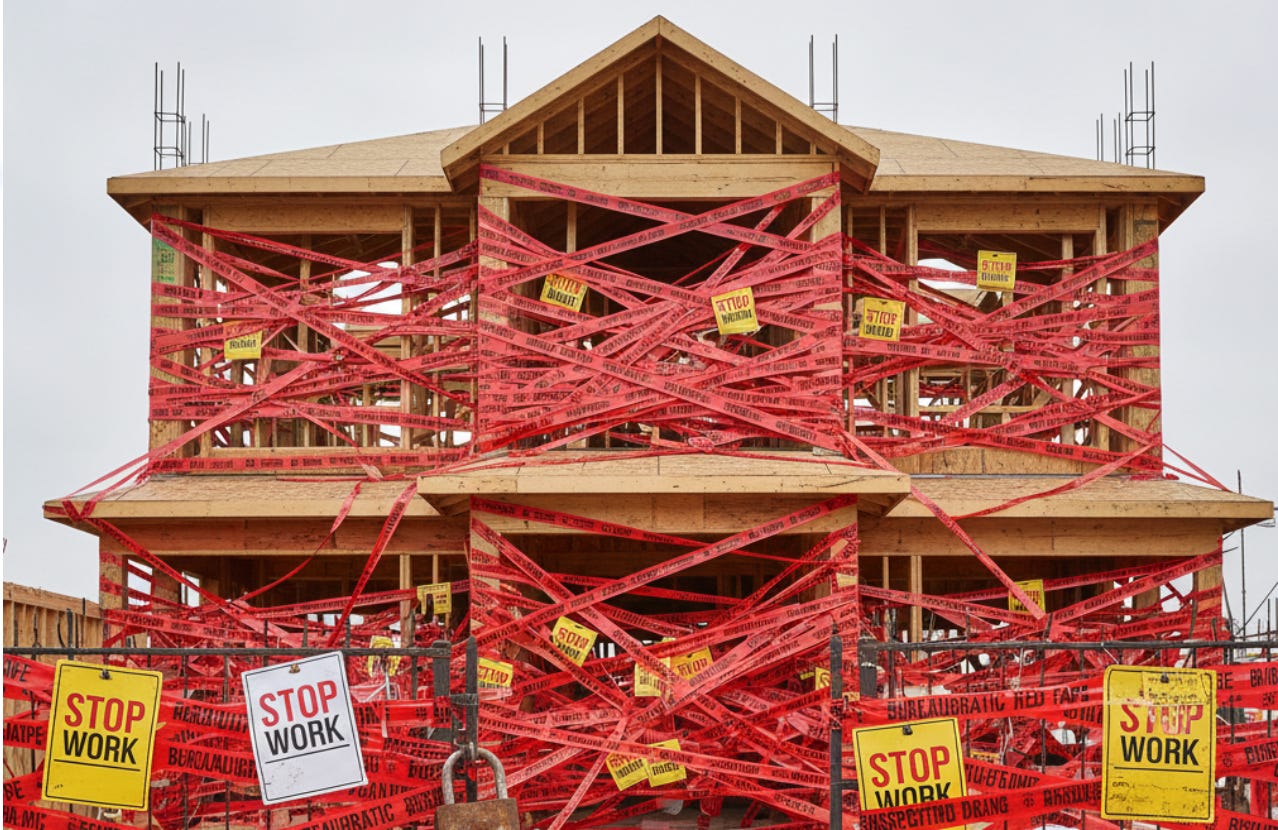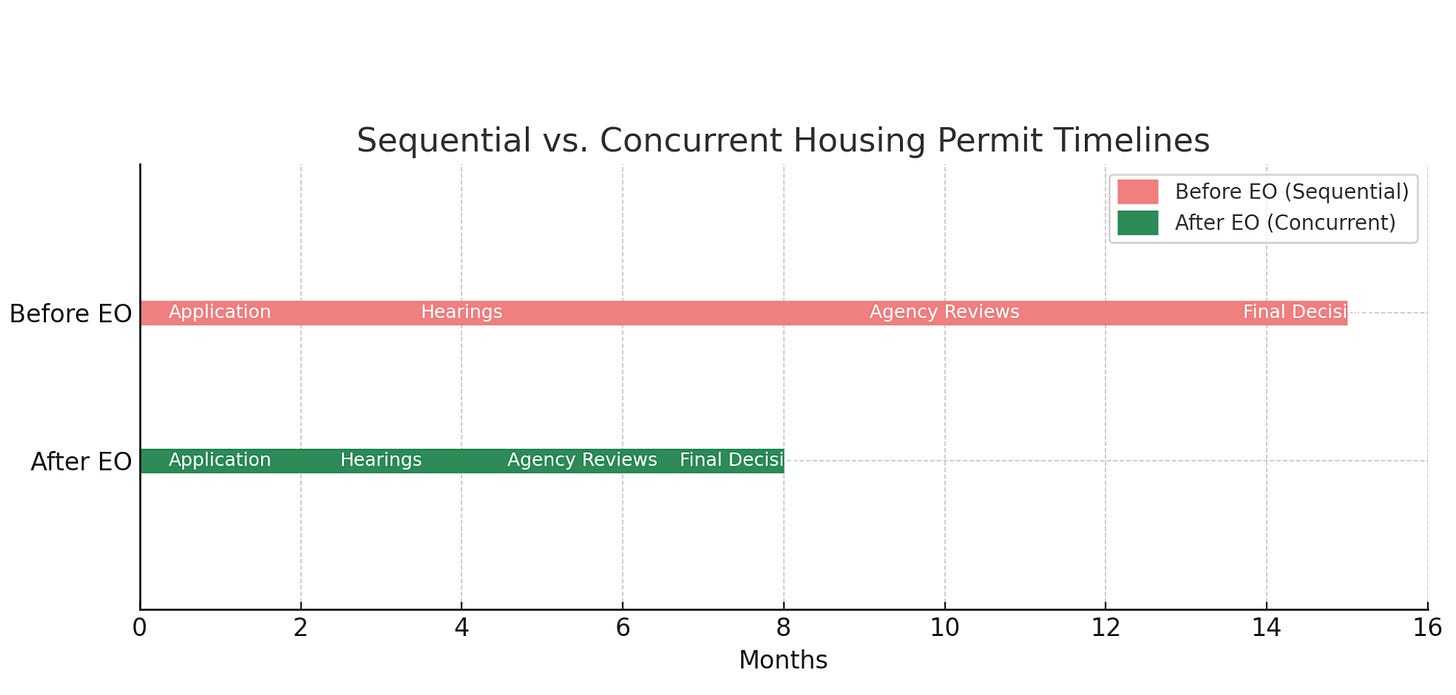Deconstructing Gov. Scott's Housing Order, Part 2: Cutting Red Tape to Build Homes Faster
Vermont has some of the longest permitting timelines in New England, and this order aims to cut them dramatically while still following required notice and comment periods.
Vermont is facing a housing crisis, and Governor Phil Scott has issued an Executive Order aimed at getting more homes built quickly while still protecting the environment. Section II of the order focuses on how state agencies and boards handle permits and fees for housing projects. Here’s what it means, step by step.
Shorter Wait Times for Housing Permits
According to the order, state agencies and boards must move housing projects to the front of the line. This includes apartments, mobile home communities, shelters, and mixed-use projects that combine housing with shops or offices.
Setting timelines where none exist: Some permitting processes currently don’t have deadlines. The order says agencies must now set clear review timelines so projects aren’t left in limbo.
Only essential testimony: Hearings will be limited to the testimony needed for a fair decision, rather than drawn-out proceedings.
Cutting review time in half: Agencies are directed to reduce their discretionary review periods by 50% for housing and shelter projects. For example, if a typical review takes six months, the new goal would be three months.
“Deemed approved” if deadlines are missed: If agencies don’t meet their timelines, the project will automatically be considered approved unless the law requires an extension. This creates strong pressure to act on time.
Processing permits at the same time: Instead of requiring one permit to be issued before another can even be considered, agencies must review them concurrently. This includes Act 250 permits, which historically have slowed projects because they were often handled after other approvals.
Quick decisions after hearings: Once a hearing ends, a decision must be issued within 60 days.
Example: If a developer wants to build a 30-unit apartment building, they no longer have to wait for months while each permit is reviewed one after another. Now, Act 250 and environmental permits will be reviewed at the same time, and the project could be approved in months instead of years.
Cutting Costs Through Fee Relief
Permitting fees can be expensive, especially for multi-family housing. The order directs agencies to propose changes that would ease these costs.
Lower fees for affordable projects: Agencies must forward proposals that reduce fees for housing projects — including mobile homes and mixed-use buildings — that are funded partly with state money and offer most units at prices a typical Vermont working family could afford.
Pay later, not upfront: Developers of prioritized housing projects may be allowed to delay fee payments until construction is finished. This makes it easier to get projects started without large upfront costs.
State budget planning: By December 1, 2025, agencies must notify the Department of Finance and Management about any budget impacts from these fee changes.
Example: If a nonprofit wants to build a new affordable housing complex, they may not have to pay thousands in fees upfront. Instead, they could defer payments until the project is complete, easing their financing challenges.
Housing Permits Go to the Front of the Line
Another key change is that multi-family housing, shelters, mobile home developments, and rehabilitation of older housing will get priority over non-housing projects.
This means if an agency is deciding between a permit for a new office park and a permit for affordable apartments, the apartment project must move first in the queue.
Example: A town might have both a new car dealership and a 20-unit apartment building seeking permits. Under this order, the apartment building takes priority.
Sidebar: How Permit Timelines Could Change
Before the Executive Order
Sequential reviews: Each permit had to be approved before the next could begin.
No deadlines: Some agencies had no firm timelines.
Typical duration: A medium-sized housing project could take 12–18 months (or more) just for permitting.
Risk: If hearings dragged on or agencies were backlogged, projects could stall for years.
After the Executive Order
Concurrent reviews: Multiple permits must be reviewed at the same time, including Act 250.
Firm deadlines: Agencies must set timelines, and if they miss them, projects are automatically “deemed approved.”
Shortened hearings: Only essential testimony is allowed, cutting down delays.
New target: Review times for housing and shelter projects should be cut by up to 50%.
Typical duration: A similar project could now be permitted in 6–9 months instead of 12–18.
Example:
A nonprofit planning a 25-unit affordable apartment building might previously have spent a year and a half in permitting. Under the new rules, that same project could clear approvals in under a year — potentially saving a full construction season.
Why It Matters
According to the Governor’s office, these changes are designed to speed up housing production by removing some of the biggest delays — long reviews, stacked approvals, high fees, and low prioritization. Vermont has some of the longest permitting timelines in New England, and this order aims to cut them dramatically while still following required notice and comment periods.
What Happens Next
Agencies must immediately begin implementing these rules, though some changes — like fee relief — will need to move through the state’s budget process. Developers and communities could start to see faster permitting as soon as this fall, but it remains to be seen how much time will truly be saved.
The big test will be whether more housing projects break ground in 2025 and 2026 as a result.




